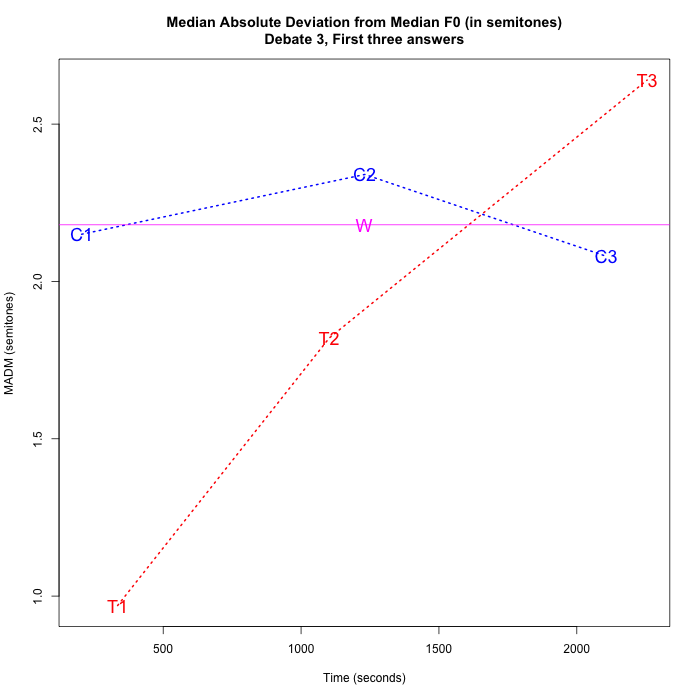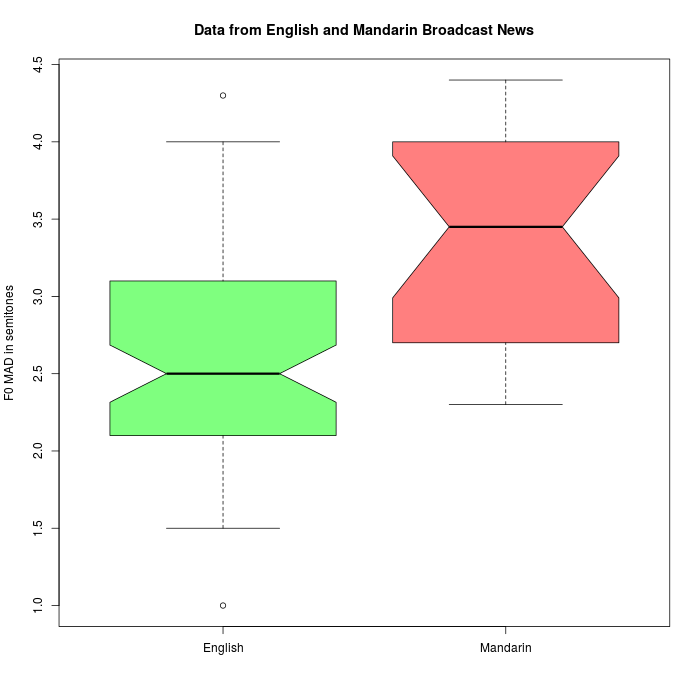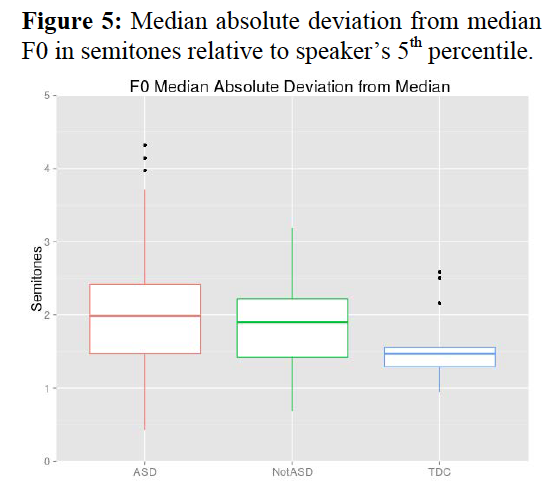Debate quantification: How MAD did he get?
« previous post | next post »
 During the last presidential debate Donald Trump started off speaking in a deliberate and controlled manner that soon gave way to his usual animated style. In an informal exchange, Cynthia McLemore observed that he was manipulating his pitch range, as he did in the second debate as well — beginning with a narrow range that dramatically widened as the debate progressed. This post is an attempt to quantify that pitch range variation with a metric Neville Ryant and I have found useful in other work.
During the last presidential debate Donald Trump started off speaking in a deliberate and controlled manner that soon gave way to his usual animated style. In an informal exchange, Cynthia McLemore observed that he was manipulating his pitch range, as he did in the second debate as well — beginning with a narrow range that dramatically widened as the debate progressed. This post is an attempt to quantify that pitch range variation with a metric Neville Ryant and I have found useful in other work.
I pitch-tracked each candidate's (nominally 2-minute-long) answers to each of the first three questions. (This covers roughly the first half of the debate — though I used only the three two-minute answers, because the rest of the discussion gets pretty messy and I didn't have time to do a carefully-aligned transcript of all the back-and-forth.)
Then I transformed the f0 estimates into differences in semitones from the median value for each answer, and took the median of the absolute value of those differences. This measure of variability — commonly called MAD, for "Median Absolute Deviation from the median" — is often used to avoid excessive influence of outliers, and therefore seems appropriate for dealing with f0, where octave errors and other scattered points are problematic for measures such as standard deviation.
I did the same thing for Chris Wallace's introduction and questions. In the plot below, the MAD ("median absolute deviation") from the median f0 of Trump's first three answers are plotted as T1, T2,and T3; the corresponding values for Clinton are plotted as C1, C2, and C3; and the corresponding value for Wallace's contributions taken as a whole is plotted as W:
So it's true — Clinton remains fairly level, at about the same MAD value as Wallace, but Trump starts out much more monotone, and ends up more prosodically animated.
Trump's median f0 values also increased (from 112 to 144 Hz), as did his pitch range measured as the 90th percentile minus 10th percentile f0 values, which increase from 26.6 Hz to 83.3 Hz).
There are lots of other reasons, besides emotional arousal, why f0 variability might increase — raising one's voice to overcome background noise or to project to a far-off listener; individual style; cultural or linguistic differences; discourse salience; and so on. For example, here's a boxplot showing MAD values for various speakers in some published collections of English and Mandarin broadcast news speech (73 English speakers, 20 Mandarin speakers):
And here's a figure from Julia Parrish-Morris et al. ("Exploring Autism Spectrum Disorders Using HLT", CLPsych 2016), showing that 65 children with an ASD diagnosis use wider pitch range — and a wider range of pitch ranges — in 20-minute excerpts from ADOS interviews, compared with 17 "Typically Developing" children, and 18 "Non-ASD" children with other diagnoses such as anxiety or ADHD:
But Donald Trump didn't become increasingly Chinese-speaking or increasingly ASD-like during the first three questions in the 10/19 debate. And the background noise level didn't change, nor did his distance from the audience. So an explanation in terms of increased emotional arousal is a plausible one.



bobbie said,
October 29, 2016 @ 5:29 pm
Trump's non-verbal behavior also differed markedly from Clinton's. He squints much more, whereas she keeps her eyes open wider. He purses his lips and shakes his head more than she does. Also I noticed that as the debate progressed, he tended to move his torso around more than she did and leaned on the podium while she stood up straighter.
Victor Mair said,
October 29, 2016 @ 10:11 pm
And let's not forget these posts from last month:
"Paper cut to the heart"
"Mad"
Bill Benzon said,
October 30, 2016 @ 12:11 pm
So we have:
1) MAD = Mutually Assured Destruction
2) MAD = Median Absolute Deviation from the median"
3) MAD = More Aroused Donald
Rubrick said,
October 30, 2016 @ 5:34 pm
The ASD results are interesting. I think most laypeople (myself included) would have guessed exactly the opposite (perhaps influenced by Dustin Hoffman's monotone in Rain Man).
[(myl) Not just laypeople —
Cashin, Andrew, and Philip Barker. "The triad of impairment in autism revisited." Journal of Child and Adolescent Psychiatric Nursing 22, no. 4 (2009): 189-193: "Many people with autism have a monotone quality to speech."
Stokstad, Erik. "New hints into the biological basis of autism." Science 294, no. 5540 (2001): 34-37: "Autism is associated with language problems, and those who speak largely do so in a monotone."
Tager-Flusberg, Helen. "On the nature of linguistic functioning in early infantile autism." Journal of autism and developmental disorders 11, no. 1 (1981): 45-56: "Clinical reports note that autistic children have peculiar voice quality and sometimes speak in a monotone."
But then —
Adamson, Lauren B., Maryann Romski, and Andrea Barton-Hulsey. "Early language acquisition in autism spectrum disorders: A developmental view." In Comprehensive guide to autism, pp. 1061-1080. Springer New York, 2014: "Moreover, several of the phenomena associated with autism, such as echolalia and singsong intonation, are not unique to ASD"
]
Mi Nu Shi said,
November 1, 2016 @ 8:03 am
I'd like to see a ranking of the median absolute deviation from median F0 of the outgoing House of Representatives. It would be fascinating to see how that breaks down by party, gender, voting record on immigration, and body mass index.